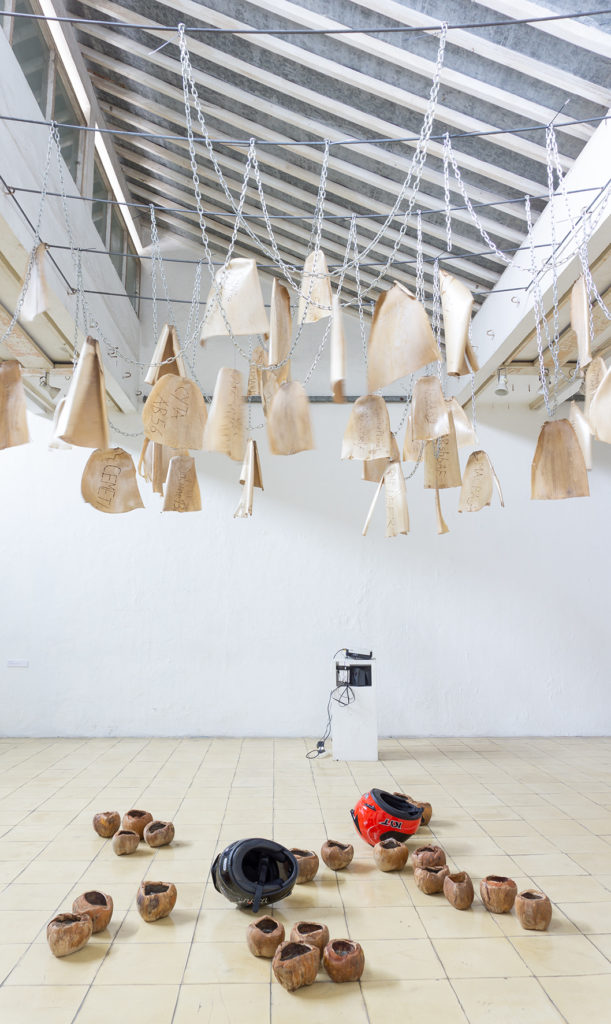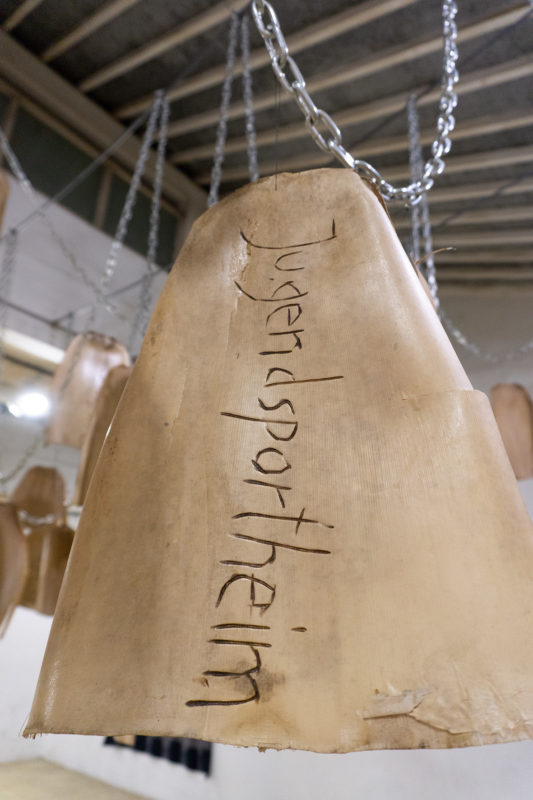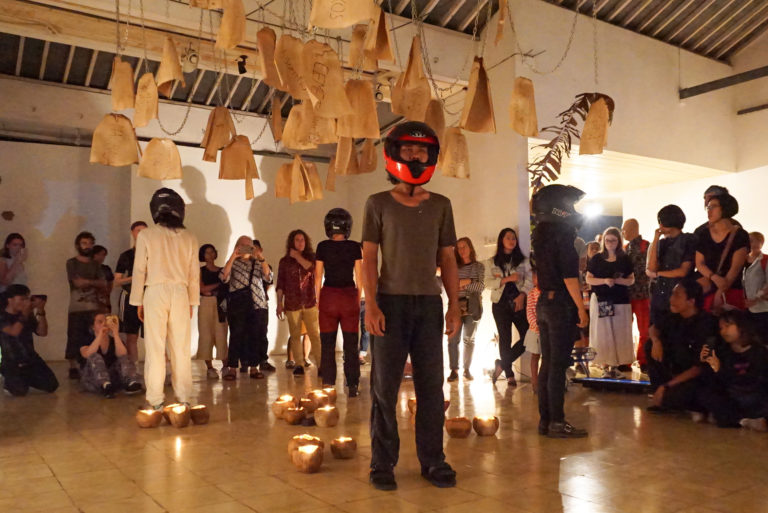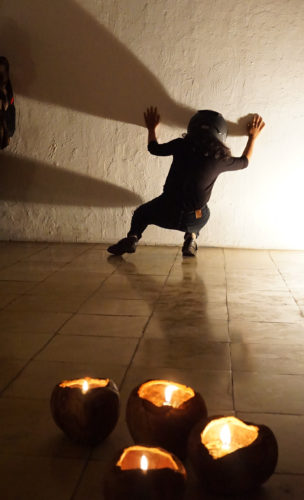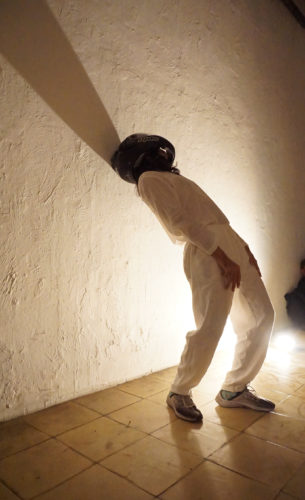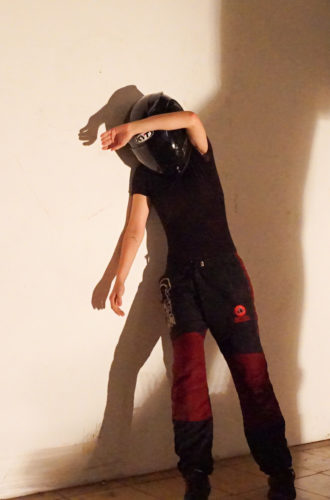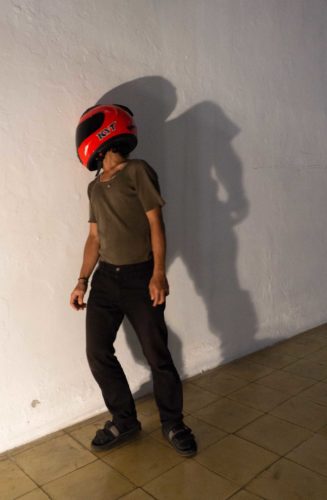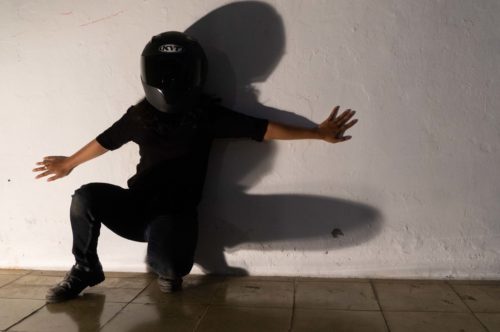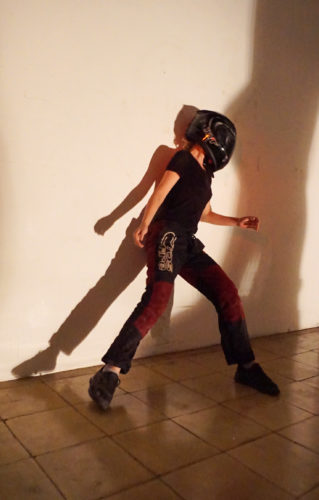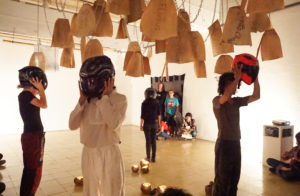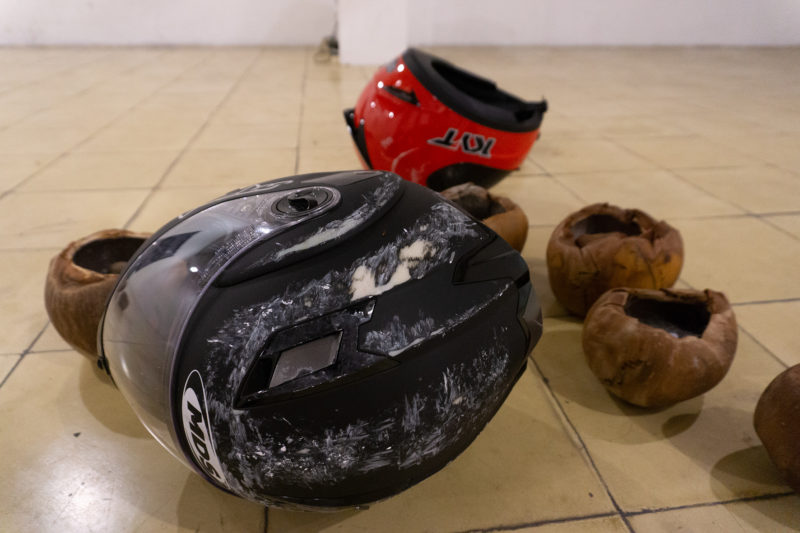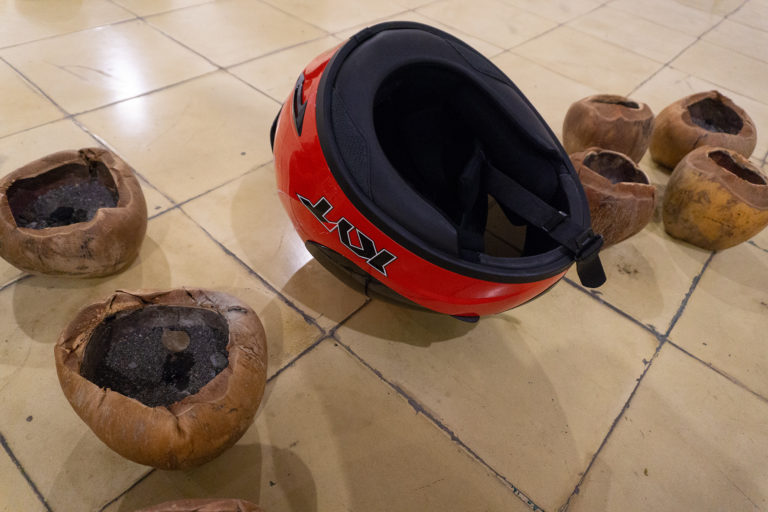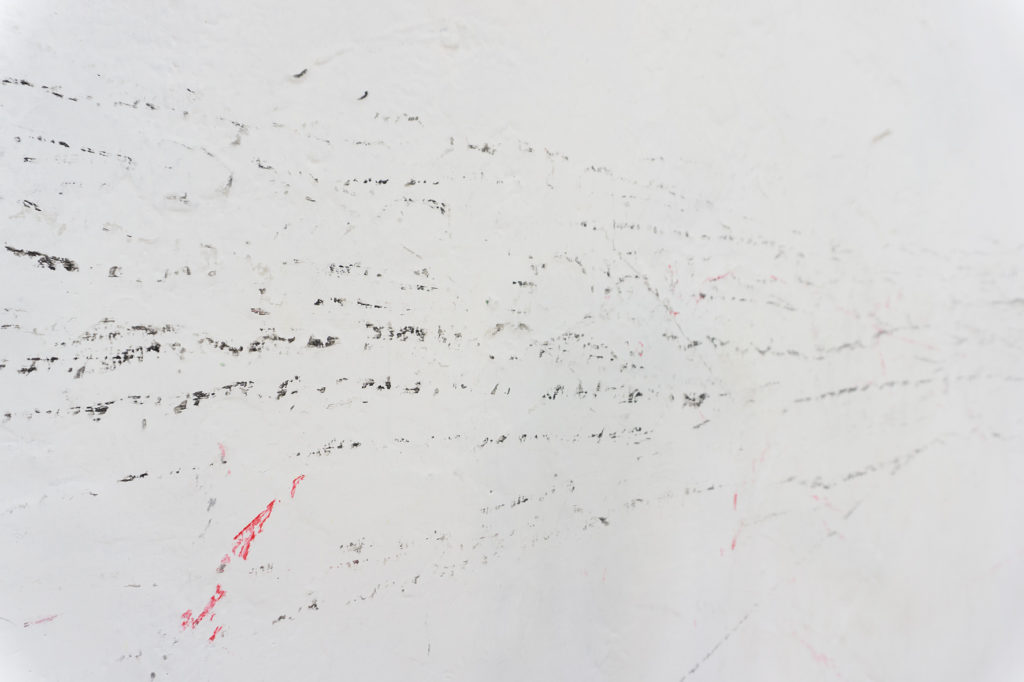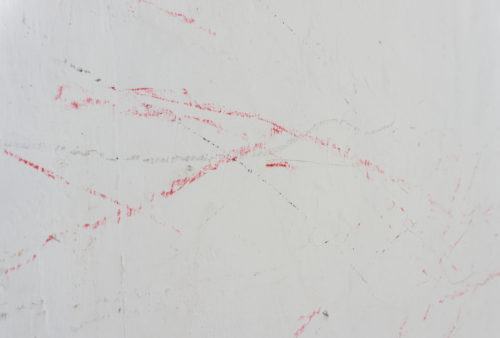2019 | iron chain, bamboo culm leaves, branded Wifi codes, coconuts, candles, motorbike helmets, performance, Google voices performance view | Exhibition view Cemeti Institute for Art and Society Yogyakarta (ID). The performers are Annu Cutter, Daniel da Costa, Wildan Lamunanmasa, Abiyya Ladangku.
In the following video you see parts of the performance which took place on the opening of our final show after a three month residency in Yogyakarta, hosted by Cemeti-Institute for Art and Society and Goethe Institute Indonesia.
Internet eats our souls. Internet burns our forests.
Internet keeps us safe from growing up. Internet makes us happy.
Our spirits are rising from coconut-heads into the hypertopia Internet, where dissembling friends aka imperialistic-capitalistic data-mining companies are making us believe they only exist for our beneft, for our entertainment, for our distraction, for our best. We feed them and in return we get abused.
We are not consuming Internet, Internet consumes us.
Biased algorithms manipulate our behaviour, preselect for us what we shall see or not see.
Is our acting still determined from an intrinsic motivation or was it implanted by the machine, the algorithm or the company behind it?
Do we rule ourselves?
The background of the work is the dependence from Internet and social media and the negative effects caused by it. Social media are a dissembling friend making us believe they only exist for our entertainment, for our distraction, for our best. But while using them, strong abuse is occurring to us. Not only that they sell our data to make profit, but they take over control about ourselves:
The system of reward with likes and followers wouldn’t be necessary to keep the platforms working, but Instagram and Facebook hold on to it because they know it causes an addiction. Likes raise the users endorphin level, just like a nice compliment from a friend, so you keep coming back and that`s of course what they want: content and frequent visitors because that`s what creates the money… in the end it is all about the money and not about the user.
The abuse happening by these companies, by manipulating direct physical influence on our bodies cannot longer be tolerated. Even worse are the biased algorithms that preselect the content for us. That leads to the narrowing of view and might result in a different process of building our opinion about something. Is this then still our own opinion, or the one of the company behind it?
In the performance this unsettling relationship is demonstrated by using different images, the setting for the performance is the installation located in the centre of the room:
The motorbike helmets and the walls of the space itself function as a kind of cage, definitely a limiting space that blocks our free development of mind. Internet, represented by the WiFi-log-in data I used during the last months, burnt into fragile bamboo bark, is billowing underneath the ceiling, like a menace from above and at the same time as a reference to some higher existence and supreme power.
The natural resources which are destroyed to feed Internet`s hunger for energy, are hanging from heavy chains, a metaphor for imprisoning us and our environment. On the ground, candles are burning inside empty coconut bowls, the uprising heat makes the WiFi-leaves move. The candles inside the coconuts symbolize our spirit of mind, feeding and vanishing in the hypertopia Internet. It sucks away our energy, creativity and autonomy. Left over are only empty vessels. The motorbike helmet is the inversion of the coconut, still containing a brain, a doubting, insecure, schizophrenic individual. Schizophrenia seems to be the perfect description of a late stage of Internet addiction and mislead usage, often connected to conspiracy theories and extremism: abnormal behaviour, strange speech, decreased ability to understand reality, false beliefs, confused thinking, hearing voices that do not exist, reduced social engagement, emotional expression and lack of motivation. But at the same time the helmet provides safety and of course anonymity.
The “voice that does not exist”, the internal calling, is an anonymous mechanical voice originating from mobile phones, which triggers the performers` actions, bringing them from a first state of passiveness to a state of self-questioning activeness. The passive state is marked by stereotypical conduct: a repetitive, pattern of movement that has no obvious goal or function, but shows the individual`s inner strife, a desperate attempt to break free. Fighting for freedom costs a lot of energy and can become violent. The helmets protect and transmit the emitted energy of the performers to the walls, in form of an abrasion drawing. The active state consists of leaving this pattern, moving around and finally reaching a certain state of clarity of mind, yet disconnected from the other individuals. Each performer holds an inner monologue in her or his mother tongue, performed in collective speech. The performers are feeling isolated, there is no direct interaction with visitors or co-performers. They can feel the presence of other individuals but cannot see or get in touch with them. From this temporarily state they return back to the passive state again. This pattern is repeated three times. The acoustic signals are getting more and more intense during the process and the end of the performance is the final take-over by technology and the exit of human beings of the machinery by leaving their cage. Yet the higher force, represented by Google Voices, does not leave you alone and tries to subvert you again by pretending you now own your freedom of will.
It is left unclear if the individuals have been released indeed or if it is just a delusion.
